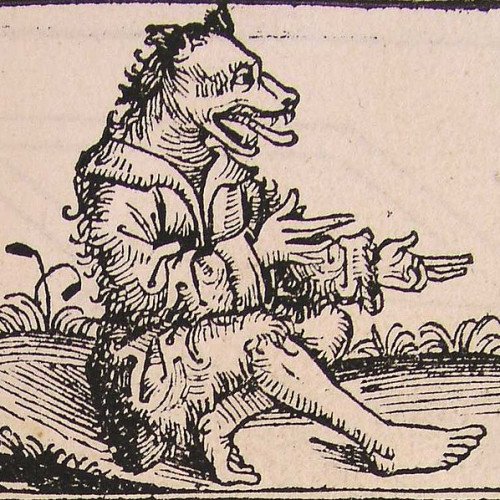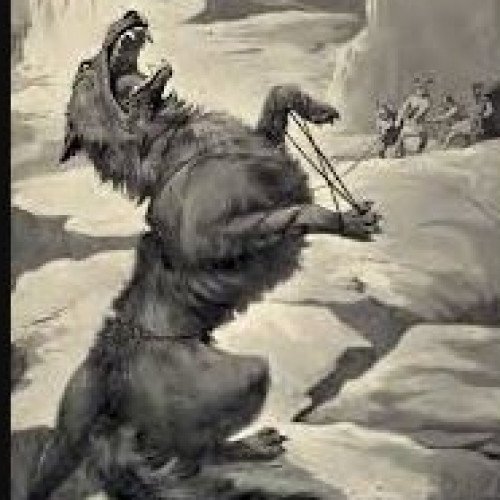Cynocephaly vs Fenrir

Cynocephaly
The characteristic of cynocephaly, or cynocephalus (), having the head of a dog—or of a jackal—is a widely attested mythical phenomenon existing in many different forms and contexts. The literal meaning of "cynocephaly" is "dog-headed"; however, that this refers to a human body with a dog head is implied. Such cynocephalics are known in mythology and legend from many parts of the world, including ancient Egypt, India, Greece, and China. Further mentions come from the medieval East and Europe. In modern popular culture cynocephalics are also encountered as characters in books, comics, and graphic novels. Cynocephaly is generally distinguished from lycanthropy (werewolfism) and dogs that can talk.
Statistics for this Xoptio

Fenrir
Fenrir (Old Norse: "fen-dweller") or Fenrisúlfr (Old Norse: "Fenrir's wolf", often translated "Fenris-wolf"), also referred to as Hróðvitnir ("fame-wolf") and Vánagandr ("monster of the [River] Ván"), or Vanargand, is a monstrous wolf in Norse mythology. Fenrir, together with Hel and the World Serpent, is a child of Loki and giantess Angrboða. He is attested in the Poetic Edda, compiled in the 13th century from earlier traditional sources, and the Prose Edda and Heimskringla, written in the 13th century by Snorri Sturluson. In both the Poetic Edda and Prose Edda, Fenrir is the father of the wolves Sköll and Hati Hróðvitnisson, is a son of Loki and is foretold to kill the god Odin during the events of Ragnarök, but will in turn be killed by Odin's son Víðarr. In the Prose Edda, additional information is given about Fenrir, including that, due to the gods' knowledge of prophecies foretelling great trouble from Fenrir and his rapid growth, the gods bound him and as a result Fenrir bit off the right hand of the god Týr. Depictions of Fenrir have been identified on various objects and scholarly theories have been proposed regarding Fenrir's relation to other canine beings in Norse mythology. Fenrir has been the subject of artistic depictions and he appears in literature.